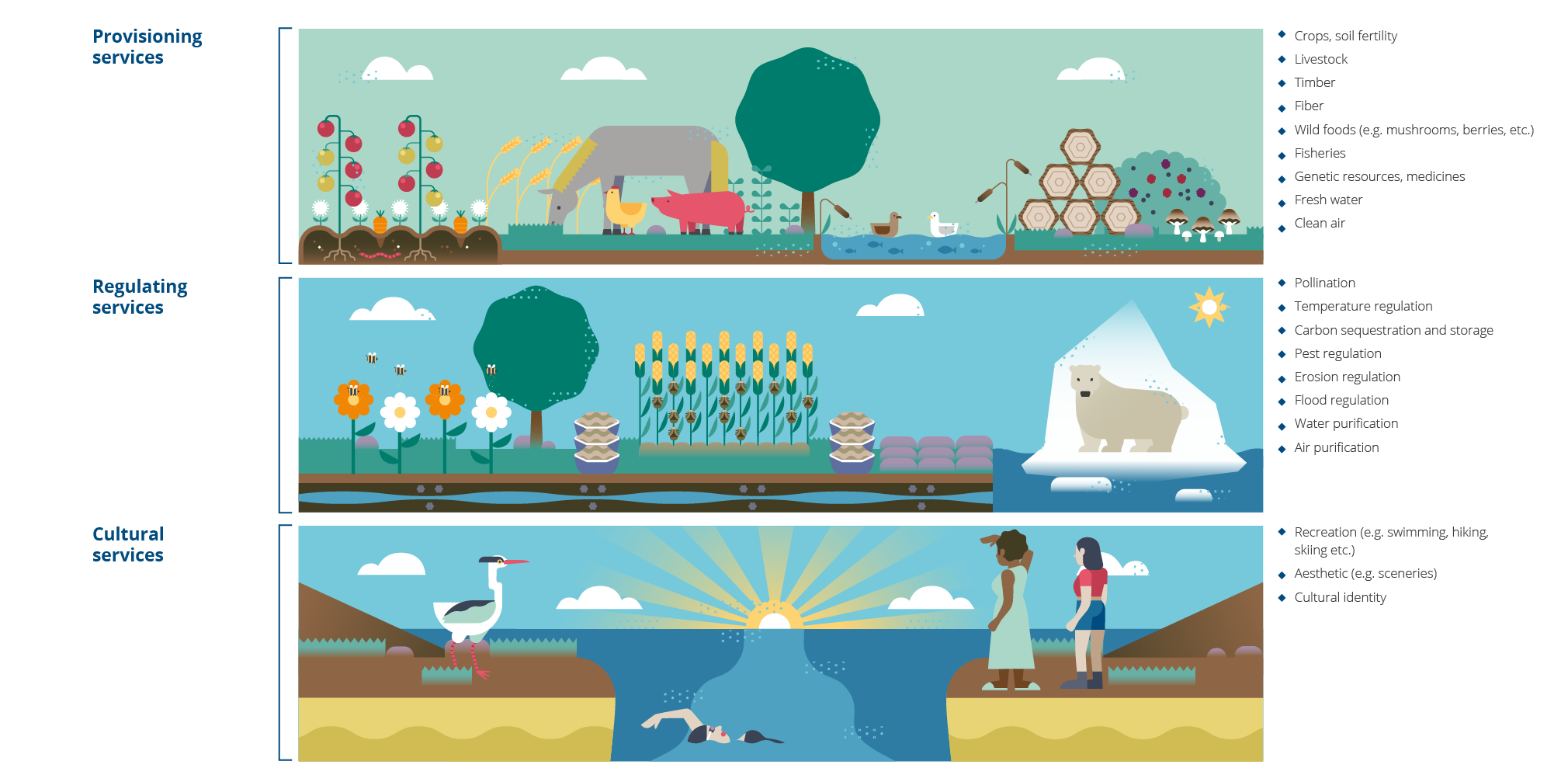What would it take to halt biodiversity loss — putting the ‘right’ economic value on nature?
A cross-cutting understanding is essential for effective action. This could be on understanding the role of nature in enabling economic activity, the impact of economic activity on biodiversity, the costs and benefits of policy options to address those impacts or assessing the multiple benefits of investments in nature. This is what we try to do at UNEP-WCMC. Our work looks at, among other things, protected areas, agriculture, sustainable finance, tourism, trade, infrastructure and the blue economy.
We recently published a paper looking at an enormous quantity of work that has been produced over the last few years. It all points to the need to address the underlying drivers of biodiversity loss outside the conservation sector. We have to change the way we meet human needs and desires, to ensure the world economy operates within the constraints of the planet.
This might require making the economic value of nature much more visible and ensuring that it is taken into account. But this is just a part of it. As the Dasgupta review highlighted, a big part of the problem is linked to an institutional failure — how we regulate economic and financial activity and also how we measure progress.
What are the points you would like to highlight from the Dasgupta review?
The Dasgupta review does not shy away from the scale of the challenge we face. It highlights that, if we are to increase the supply of natural capital and reduce our demands on the biosphere, large-scale changes will be needed. These changes need to be underpinned by levels of ambition, coordination and political will at least as great as those of the Marshall plan launched after the Second World War. It shows that we need engagement both across governments and across international boundaries.
It flags the importance of education and making sure that we appreciate our place in nature, so that we are willing to take and sustain the action we need to. It also flags the role of the individual. We all make decisions that impact on nature, so we can be part of the change. I have, for example, recently changed my bank and pension plan.
What kind of governance structures do we need to overcome this ‘institutional failure’?
With our Cambridge Conservation Initiative partners, we are looking at the type of governance that is needed to manage landscapes for multiple benefits, including biodiversity. We can see that there are different organisations with different mandates and interests working within different but overlapping administrative boundaries, none of which tend to match up with ecological boundaries. There can even be an international dimension, for example if there are international trade and investment interests. How do we balance international interests with local people’s goals and national-level biodiversity targets? It is a governance challenge.
According to the World Economic Forum’s New Nature Economy work programme, around half of the world’s gross domestic product (GDP) is moderately or highly dependent upon nature, and this dependency is not concentrated in the world’s big agricultural producing countries because of global trade links.
How do we balance international interests with local people’s goals and national-level biodiversity targets? It is a governance challenge.
Changing how our economies relate to biodiversity is not just about agreeing a good post-2020 framework in the Convention on Biological Diversity but also about its uptake by other international institutions — the World Trade Organization in this case. Fortunately, some progress is being made there. For example, the Agreement on Climate Change, Trade and Sustainability is trying to establish how trade rules can support climate and sustainability goals.
Like in all governance structures, it is essential to have an enforcement mechanism. Ultimately, this depends on countries’ and their leaders’ commitment to allocating sufficient resources to address biodiversity loss. Here, too, there are some encouraging developments, such as the European Green Deal and the Leaders’ Pledge for Nature from the UN Biodiversity Summit 2020. However, as the Dasgupta review highlights, we need coordinated action at an enormous scale.
What kind of social inequalities are linked to biodiversity loss?
First, there is impact inequality among countries. Trade allows us to have places where the footprint of humankind outstrips the local capacity of nature to supply that footprint. Looking at this globally, it means that, through trade, richer countries are driving biodiversity loss around the world. If we plot how countries perform on the human development index against their ecological footprints, only very few countries with high human development index scores operate within an equal share of the world’s biocapacity.
Then there are differences within society. Building on the trade example above, if we consider that the benefits of engaging in trade aren’t necessarily captured by the poorest in society, it paints a worrying picture. This is because the poorest in society are also likely to bear the greatest costs of any biodiversity loss associated with trade, as they rely most heavily on nature in their day-to-day lives.
Lastly, there is intergenerational inequality. Having recently read David Attenborough’s 'A life on our planet', the intergenerational point terrifies me. Our world is changing very fast. An analysis done for the Dasgupta review by the Natural History Museum and Vivid Economics also highlighted that, if we delay action on biodiversity by a decade, the costs of stabilising biodiversity loss double and the chance of maintaining levels of biodiversity similar to those we enjoy today disappears. So the urgency of acting now is also clearer than ever.
Can the UN’s new accounting system be a game changer in the way we value nature?
The Dasgupta review suggests that we need to move to measuring our wealth as a measure of economic progress, rather than our income or levels of activity as captured by GDP. It proposes that we measure our progress based on inclusive wealth, which includes natural capital. This idea is embedded in the UN’s new system of environmental economic accounting — ecosystem accounting (SEEA-EA), as a crucial part of the natural capital stock are our ecosystems.
We are already seeing the impacts of the new system in our work. The SEEA-EA guidance has extended the reach of biodiversity data. Rather than being of interest to the environment ministry, data are now being collated and disseminated by offices of national statistics, which are then scrutinised by economic planning departments, who are then advocating policies to protect nature but from the perspective of socio-economic progress. It is quite exciting and promising.
Are you optimistic about our ability to change the way we value and interact with nature?
I think people do want change and do want more from governments than words. I also think COVID-19 has given us a bit of a wake-up call.
In the Dasgupta review, too, there is a focus on the idea of socially embedded preferences, meaning that a person’s behaviour and practices are influenced by the behaviour and practices of others. This offers hope that widespread behaviour change could be possible, and at lower cost than we might expect if people like to conform. The current fashion for more plant-dominated diets could be a good example.

James Vause
Lead economist at UNEP-WCMC


Document Actions
Share with others